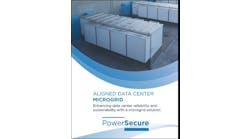Big Win for Local Energy: First Virtual Power Plant Snags Contract in US Wholesale Capacity Auction
Sunrun last week became the first company to win a contract to supply capacity to a wholesale power market from a virtual power plant — solar energy and storage aggregated from homes.
The San Francisco, Calif. company, which sells solar power, battery storage and energy services to residential customers, competed head on with other generators in ISO New England’s 13th Forward Capacity Auction (FCA) and won a contract to provide 20 MW of capacity from its BrightBox home solar and battery systems to the ISO beginning in 2022.
The contract is significant because it demonstrates how local energy resources can compete with centralized power in highly price-sensitive wholesale power markets.
“This is a breakthrough moment,” Sunrun CEO Lynn Jurich said in a statement. “This new energy services model is a win-win for everyone.”
The auction is designed to procure resources for electricity demand three years in the future. FCA 13 met needs for the 2022-2023 delivery year.
Virtual power plant equals 5,000 customers
The auction was also notable because it closed with the lowest prices in six years. The preliminary clearing price across New England was $3.80/kW-month. Last year’s capacity auction cleared at $4.63/kW-month.
Sunrun’s participation in the ISO’s capacity market marks a first for a solar power company, as well as for wholesale markets. Sunrun was able to participate as a “hybrid” resource — one that combines the output of solar panels on thousands of houses rather than a single, centrally located facility — because of new federal requirements to create a level playing field for all resources, including battery storage and resources that receive state-sponsored subsidies. ISO New England was one of the first regional markets to comply with the rules, issued about a year ago by the Federal Energy Regulatory Commission.
Sunrun says the 20-MW contract represents about 5,000 New England customers. This means to meet its new contractual obligations, Sunrun must install at least 5,000 BrightBoxes in New England in the next three years.
The company hopes to spur installations in the region by using the expected revenue from the capacity contract to lower the upfront price for customers.
Interested in speaking at Microgrid 2019, May 14-16 in San Diego? Apply by March 1.
In some jurisdictions, Sunrun’s BrightBox can be used to shift solar power consumption to peak evening hours. In Massachusetts, Sunrun markets the ability of its BrightBox to provide backup power during storm outages.
For capacity market purposes, Sunrun bid its future Brightbox capacity based on the times of day during the year that New England experiences peak demand. That means Sunrun resources will respond to dispatch signals sent by the ISO, but Sunrun customers will still have backup power available if they need it.
“Local solar and batteries are the only resource that can provide clean backup power to families when the grid goes down and can also participate in these markets to reduce grid costs,” said Chris Rauscher, Sunrun’s director of policy and storage market strategy.
“When this technology is bundled and coordinated into a virtual power plant, it benefits all energy users and the grid by reducing the need for expensive, fossil-fueled power, and avoiding line losses and grid upgrades,” Rauscher said.
Sunrun is also looking to the partnership it formed in January 2017 with National Grid to help expand its presence in New England. The partnership calls for the companies to own about 200 MW of residential solar assets across National Grid markets, which include Massachusetts, Rhode Island and New York. National Grid committed $100 million in equity to the partnership.
In May 2018, Sunrun expanded its partnership with National Grid under which the utility provided about $8 million for a “share in revenues that arise from grid services contracts we jointly bid prior to June 2019.”
Track news about the emergence of virtual power plant projects. Subscribe to the free Microgrid Knowledge newsletter.







